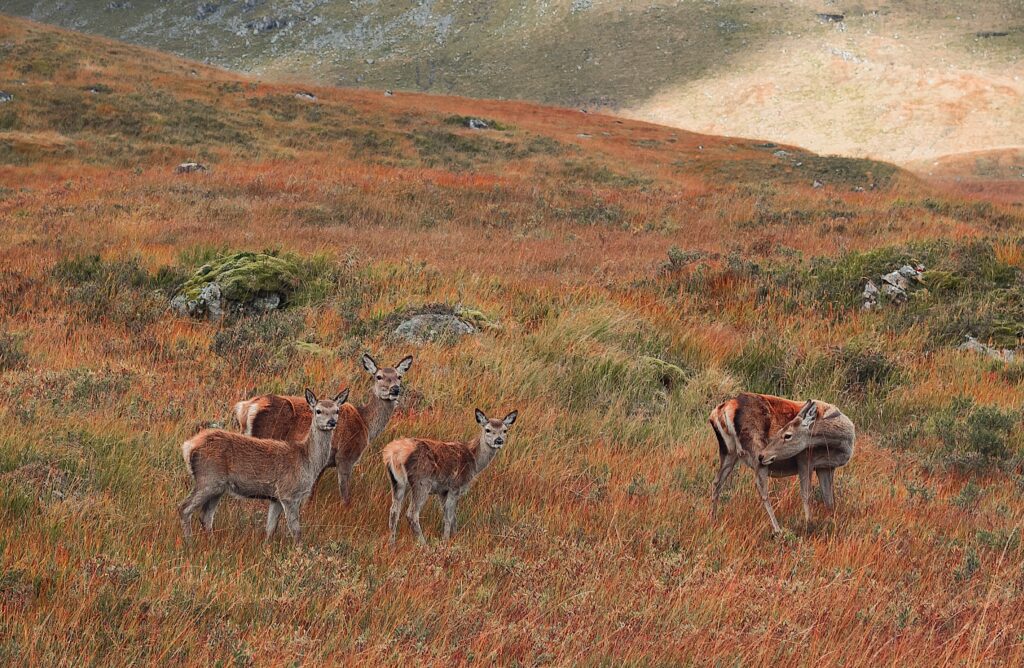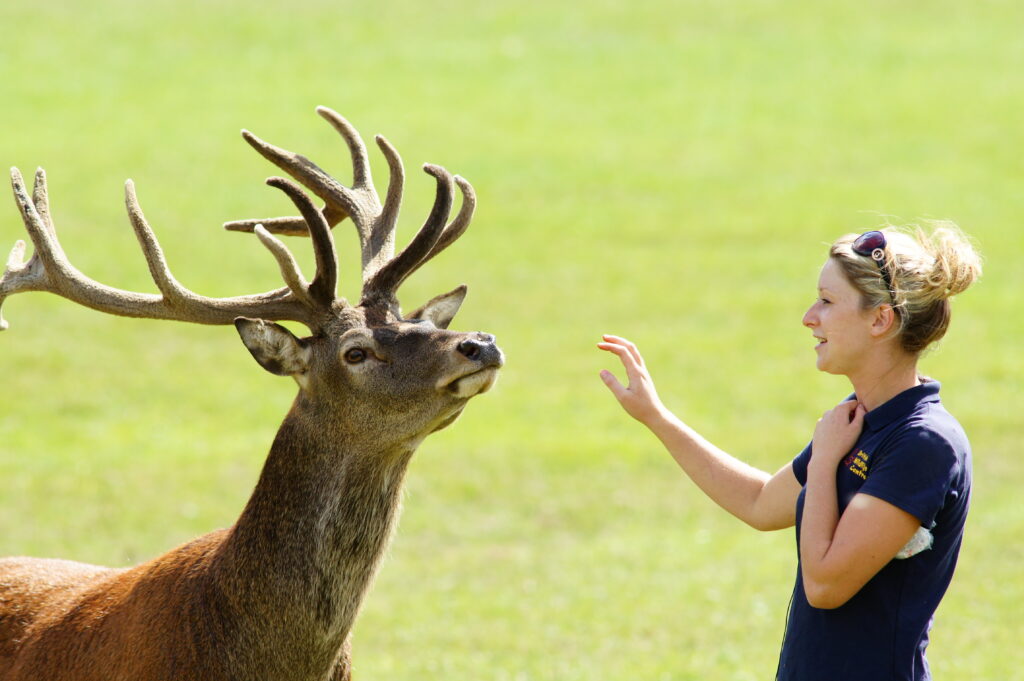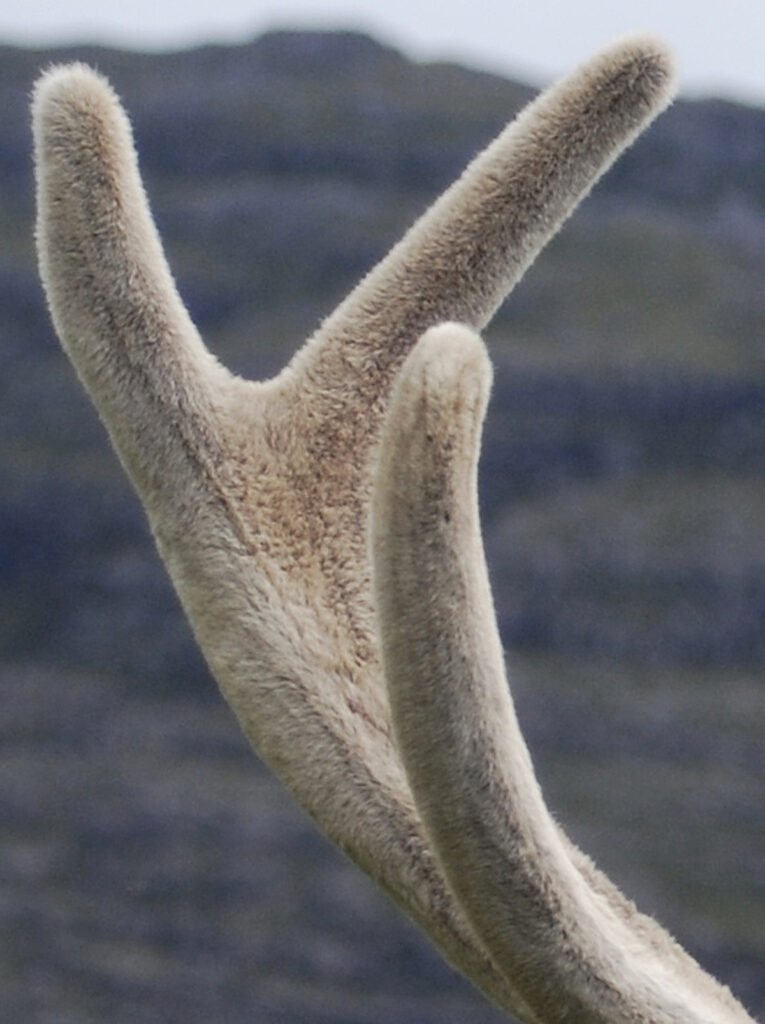Past and Present Approaches to the Management of Red Deer

This article was originally published at The Conversation and has been republished with Creative Commons.
FOR THOUSANDS OF YEARS, people in the British Isles lived with and depended on wild animals for food and clothes. The land teemed with species such as deer, boar, wolves, lynx, and beavers. Then came farming, population growth, and industrialization. Many species were hunted to extinction, and their habitats were lost.
Archaeological research reaches back in time to understand how humans and wild animals interacted. Ancient bones and teeth reveal these complex relationships.
Today interactions between wild animals and people are often in the news, from urban foxes to tree-felling beavers and wild boars. Even the red deer—the monarch of the glen, celebrated as a symbol of wild Scotland—is facing widespread calls for population control and, on the Hebridean island of South Uist, total eradication.
Deer were a mainstay of British diets before farming and, out on the islands, my research demonstrates they remained an important food source beyond the 15th century. It was only in the Middle Ages that deer became the preserve of royal hunts and later the favored prey of fee-paying hunters.
Today they are often viewed as pests by the communities they impact. A combination of factors, including COVID-19 and climate change, has seen deer numbers increase and affect both landscapes and gardens. They also cause accidents on roads and carry the ticks that pass on Lyme disease.
As wild animals, they are not owned and only become someone’s property when they are captured or killed by people entitled by law to do so. This is usually the owners of the land they inhabit. Land-owning estates manage most herds and may provide hunting access for a fee.
The venison can be sold, but often goes to waste due to a lack of sufficient trained staff to check carcasses and markets for the meat. Hides are generally not valued, and antlers are sold as dog chews.
DEER DEBATES ON SOUTH UIST
In March 2023, the tensions between red deer and locals reached a crisis point on the Scottish island of South Uist. There was a call to eradicate an entire herd of 1,198 animals, as their behavior was negatively affecting locals. Arguments on either side focused on their history, use, and value.
As an animal archaeologist, my research has shown that red deer were taken to Scottish islands for food more than 5,000 years ago.
In the absence of any predators, their numbers were controlled through the killing (and eating) of both red deer calves and adults. Hides were worked and the valuable antlers, shed annually from stags, were used to create beautifully crafted tools and adornments. Red deer are represented in early art, both on and off the islands. A recent find of spectacular rock art on mainland Scotland has highlighted their cultural importance during this period.
Unlike on most of mainland Britain, deer remained an important island food and thrived up until recently. In the 20th century, new animals were introduced from the mainland. Genetic analysis suggests these deer supplemented existing populations, and the herds became reestablished.
Over the past decades, deer numbers across the U.K. have exploded from 450,000 in the 1970s to 2 million today—the highest level for 1,000 years.
A recent count found that South Uist deer numbers have increased by a third, from around 800 in 2015 to 1,200 today. This pattern is repeated elsewhere, such as on the isles of Lewis and Harris. At the same time, the prevalence of ticks and the disease they carry has increased.
RELEARNING TO VALUE RED DEER
Deer herds clearly need to be managed, but there is a cost. Culling them requires trained individuals and care to ensure animals do not suffer. Paying hunters provides some income, but the value of deer is not clear to all who live in deer-impacted communities.
As in the past, venison, antler, and hides are all valuable items. Investment in resources and training by Stòras Uibhist, the community-owned company that manages the 93,000-acre South Uist Estate, is producing venison. That’s both as a low-cost local food and a high-value delicacy. Antler is also a sustainable resource, grown and shed each year.
Archaeological initiatives are demonstrating to islanders, and beyond, how easy it is to work with this material. With only simple tools, saleable items inspired by island heritage and culture can be produced. On South Uist, the estate is looking to process and sell hides, while wildlife-focused deer stalking with cameras can provide new activities for tourists.
The deer of South Uist have gained a reprieve. The community voted to keep the herd but in smaller numbers. In the absence of predators, humans need to actively manage such wildlife to maintain a balance. The value of red deer, both alive and dead, must be realized to create sustainable wild landscapes for the future.
The deep history of human interactions with these animals can provide inspiration for their future management. Archaeologists like me hold this knowledge, and by sharing the stories and skills of the past, we can reconnect today’s people with previous generations.



































